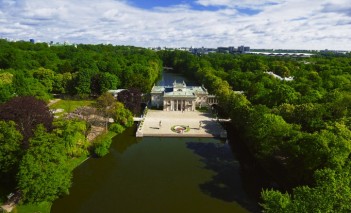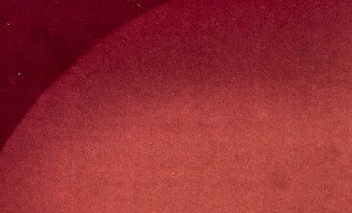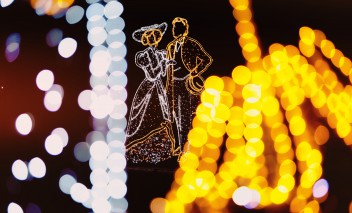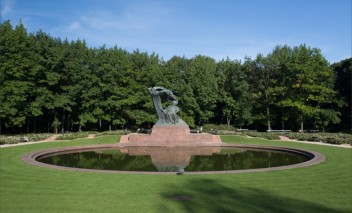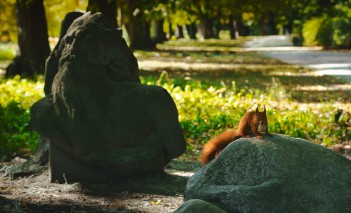"Vytautas's Oath" - who is who in the painting by Jan Styka?

Find out what important historical figures were immortalized by Jan Styka in the painting "Vytautas vows revenge against the Teutonic Knights against the backdrop of a burning Kaunas". In a symbolic way, the artist referred to the heroic history of Lithuania, a country with a centuries-old tradition, of which the achievements of Vytautas, Grand Duke, are an important part.
The painting depicts the prince surrounded by several leading representatives of the Gediminids, descendants of the Jagiellonians, who had ruled Lithuania since the end of the 13th century. Among them is Jagiełło, cousin brother of Vytautas, who became king of Poland in 1386. The alliance of these two great leaders and politicians ensured Lithuania and Poland victory over the Teutonic Knights.
Samogitian warrior (1)
Samogitia was a hotbed of conflict between Lithuania and both the Prussian and Livonian branches of the Teutonic Order. It was the target of relentless destructive expeditions by the Teutonic Knights. The Samogitian is depicted wearing characteristic scale armour; Matejko portrayed Jan Žižka of Trocnov in a very similar way in his painting "Bitwa pod Grunwaldem" ["The Battle of Grunwald"].
Sigismund, son of Kęstutis (2)
After the death of Vytautas (1430), he fought a fierce war with his cousin Švitrigaila (Svidrigiello) for the rule over Lithuania, which culminated in Svidrigiello’s defeat at the Battle of Wilkomierz (Vilkomir) (1435). Sigismund’s head is adorned with a somewhat fanciful helmet, probably inspired by Matejko’s Domarat of Kobylany immortalized in his painting "The Battle of Grunwald". In his hand there is a banner with the image of Vytis – also known as the Pahonia – which has accompanied Lithuanians at least since the second half of the fourteenth century.
Švitrigaila (Svidrigiello), son of Algirdas (3)
One of the most colourful characters of the epoch, a schemer who repeatedly changed alliances and supported the full independence of Lithuania. With the help of the Teutonic Knights he fought several times against Jagiello and Vytautas. He was defeated at the Battle of Wilkomierz (Vilkomir) (1435).
Kęstutis, father of Vytautas, son of Gediminas, brother of Algirdas (4)
He co-ruled Lithuania together with Algirdas, and was one of the most talented Lithuanian leaders. He resided in Trakai. He was famous for his uncompromising hostility towards the Teutonic Knights, who called him a 'rabid dog'. Towards the end of his life, he came into conflict with Jagiełło and died in unexplained circumstances as his prisoner.
Algirdas, son of Gediminas, brother of Kęstutis (5)
Grand Duke of Lithuania, the most outstanding ruler of mediaeval Lithuania next to Gediminas and Vytautas. He strengthened its position as a superpower in the region and successfully resisted the Teutonic Knights. He collaborated with his brother Kęstutis. He is considered to be one of the greatest European politicians. He resided in Vilnius.
Vytautas, son of Kęstutis, cousin of Jagiełło (6)
Grand Duke of Lithuania. A major part of his political activity was devoted to fighting against Jagiełło, whose main focus was the dispute over the form of the Polish-Lithuanian union and the future of Lithuania. Vytautas was an advocate of Lithuania’s complete independence. He pursued a far-reaching policy, becoming involved in Ruthenian and Tatar affairs. He was also co-victor at the Battle of Grunwald/Žalgiris. Styka painted Vytautas almost exactly as Matejko had done twenty years earlier in "The Battle of Grunwald". Such a reference seems obvious – in 1410, the Grand Duke fulfilled the legendary vow made at the town walls of Kaunas.
Skirgaila, Algirdas’s son (7)
He was one of the closest, most trusted and loyal collaborator of Jagiełło, performing a number of diplomatic missions on his behalf. He negotiated the terms of the Polish-Lithuanian union, and after Jogaila’s coronation he became governor of Lithuania. Styka portrayed him in contemporary nobleman’s attire.
Pagan priest (8)
Until the end of the fourteenth century, Lithuania remained a pagan country, although the Christian faith was tolerated: there were Catholic churches, and many members of the Gediminid dynasty were baptised – for political reasons – in the Orthodox rite. The Christianization of Lithuania was carried out by King Władysław II Jagiełło.
Jogaila, son of Algirdas, cousin of Vytautas (9)
Grand Duke of Lithuania from 1377 and King of Poland from 1386 (as Władysław II Jagiełło); the founder of the Jagiellonian dynasty. The Union of Krewo (1385) signed with the Polish nobility led to the formation of the Polish-Lithuanian alliance. He was also responsible for the conversion of Lithuania to Christianity. In his foreign policy, he focused on the Teutonic Knights. The co-author of the victory at Grunwald. In the painting, he is depicted wearing a Byzantine Zischägge helmet and carrying a pavise shield, two characteristic attributes associated with the mediaeval Lithuanian (Baltic) military.

